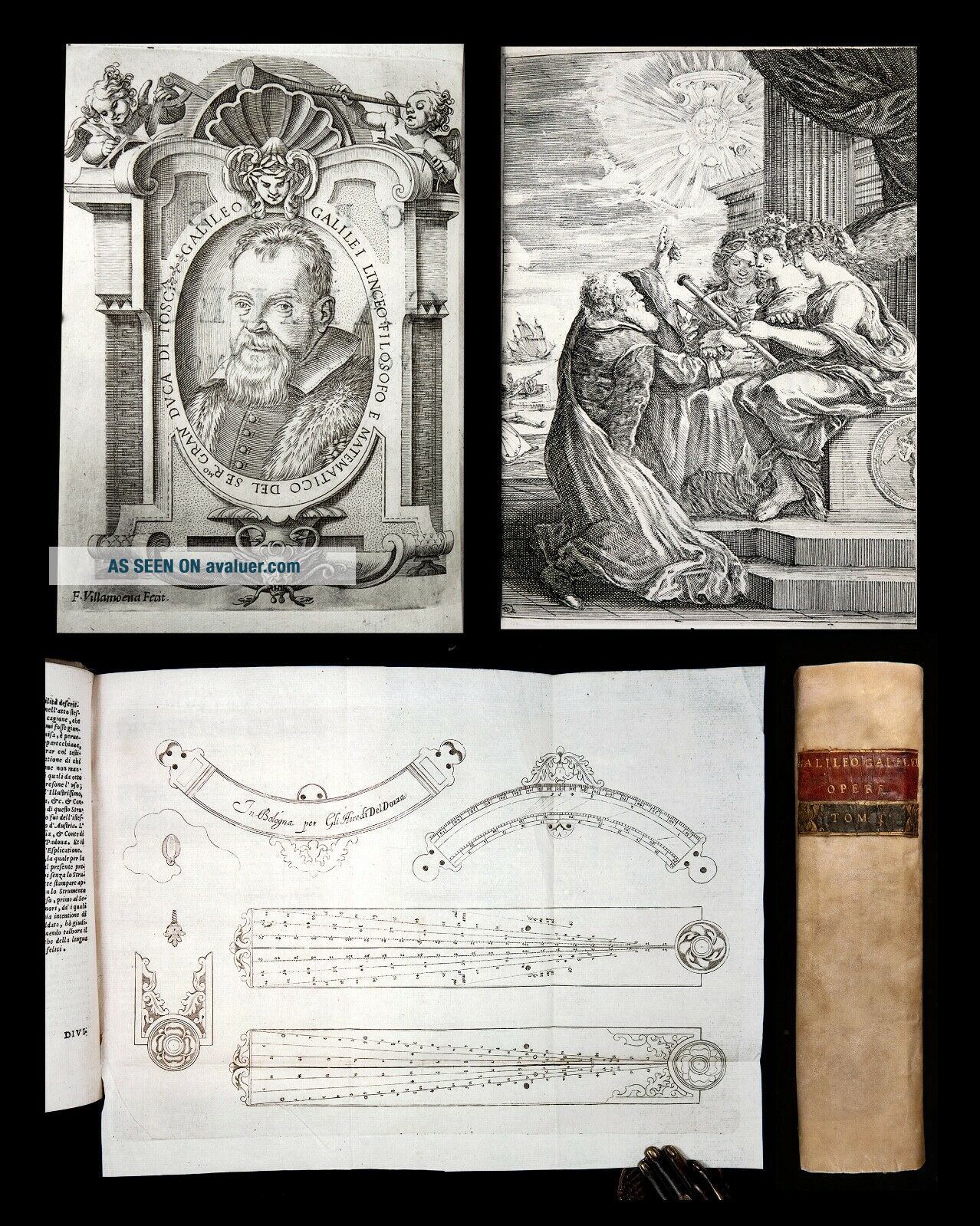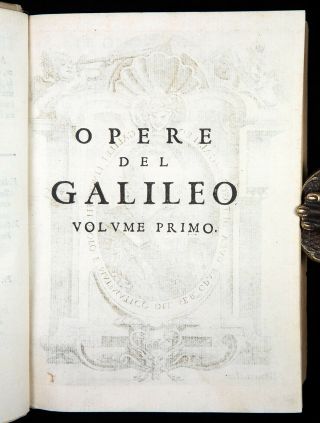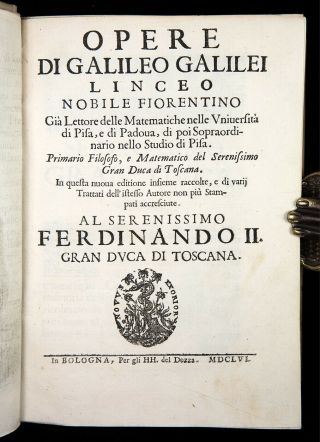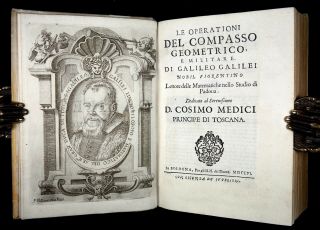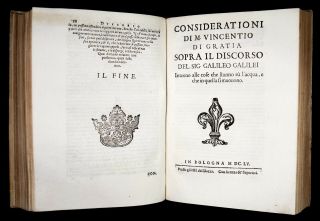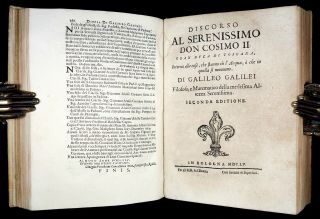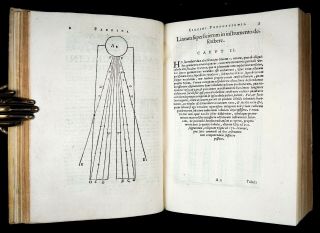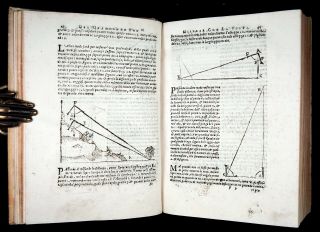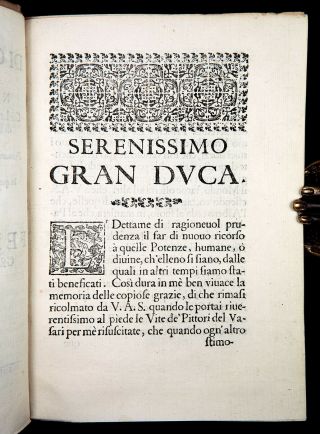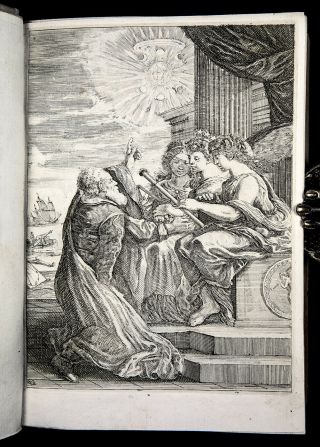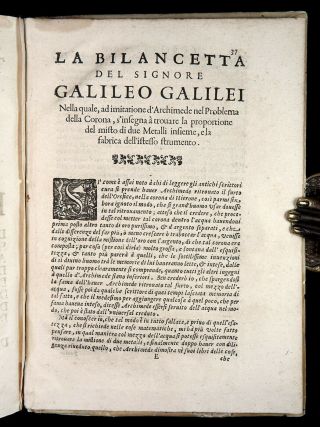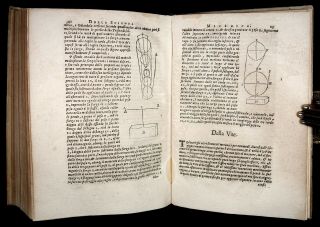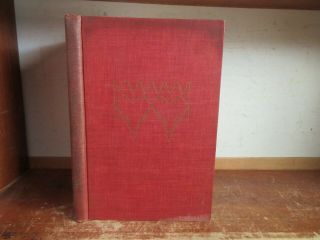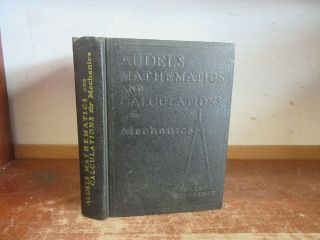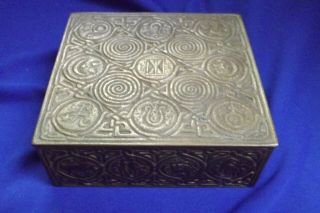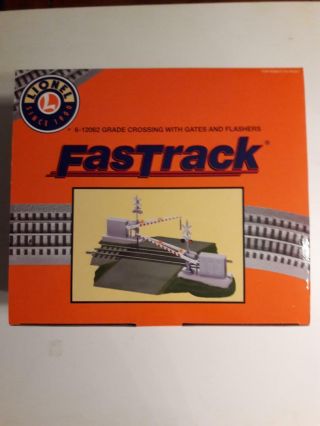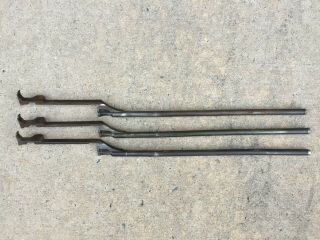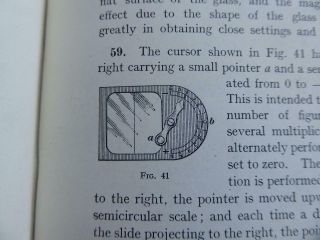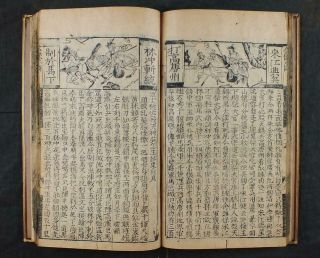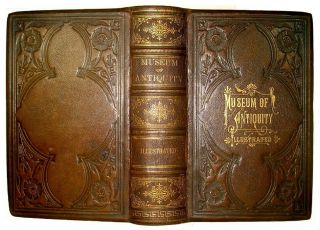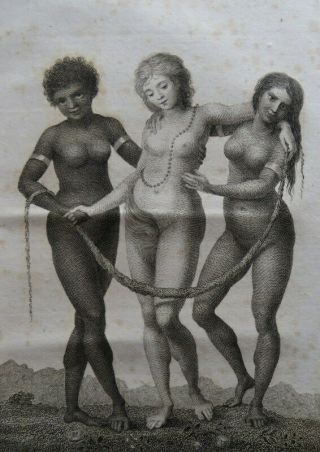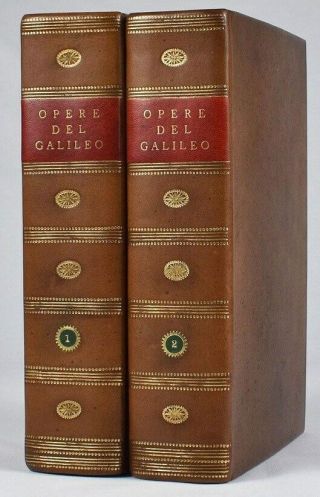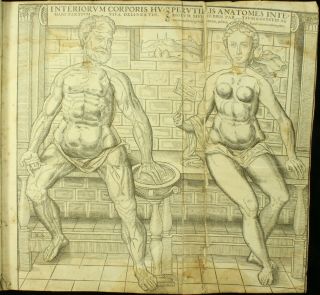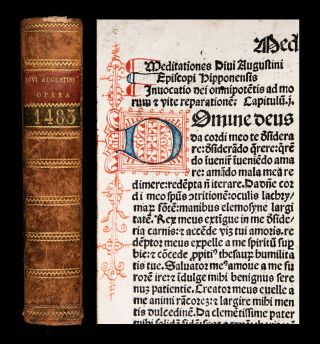1655 - 6 GALILEO Opere PHYSICS Math MECHANICS Water COMPUTATION INSTRUMENT Rare
Item History & Price
Printed in Bologna by heirs of [Evangelista] Dozza, 1655-1656.(General title, and title to 'Compasso' dated 1656, other individual title dated 1655.)
Text mostly in Italian (Capra's Circini is in Latin). Illustrated with an allegorical frontispiece by Stefano della Bella, a fine engraved portrait of Galileo by F. Villamoena, a large ...folding engraved plate of Galileo's "military compass”, and many woodcut diagrams in text.Edited by Carlo Manolessi and dedicated to grand duke of Tuscany, Ferdinando II de' Medici.
Offered here is a COMPLETE 1ST VOLUME (OF TWO) OF THE RARE AND DESIRABLE FIRST COLLECTED EDITION OF GALILEO'S WORKS.The volume comprises 9 individual works, each with its own title page.Galileo Galilei (1564 - 1642) was an Italian physicist, mathematician, astronomer and philosopher who played a key role in the Scientific Revolution. His achievements include improvements to the telescope and consequent astronomical observations, and a strong support of Copernicanism. His contributions to observational astronomy include the telescopic confirmation of the phases of Venus, the discovery of the four largest satellites of Jupiter (named the Galilean moons in his honor), and the observation and analysis of sunspots. "Galileo, perhaps more than any other single person, was responsible for the birth of modern science." (Stephen Hawking)This is the celebrated First Collected Edition of Galileo's works, which appeared only a year after his death and is of great interest for 17th-century reception of Galileo's thought: this was the edition in which Newton and later eminent scientists read their Galileo. In addition to Galileo's own writings, this collection also includes relevant polemical publications and letters by both his opponents and supporters. Gathered here together for the first time, they offer a veritable panorama of scientific activity in Italy during the first half of the 17th century, and are critical for understanding the history of the formation of Galileo's corpus.
This important edition contains many unpublished or little-known items provided to the editors by Vincenzo Viviani, Galileo's friend and disciple. Among them are a number of Galileo's hitherto unpublished letters and experiments and the La Bilancetta, his first scientific work, written in 1586.Galileo's famous Dialogo and the letter to Christina di Lorena were banned by the Inquisition and, therefore, omitted in this 1st collected edition.The first work in this volume Le operazioni del compasso (first printed in Padua in 1606) was GALILEO'S FIRST PRINTED WORK AND THE FIRST PUBLISHED WORK ON AN ANALOGUE CALCULATOR, which is followed by three closely related works: Bernegger's annotations on Galileo's compass, as well as Capra's plagiarized Usus et fabrica circini and Galileo's response Difesa [...] contro alle Calunie.Around 1596 Galileo invented an instrument ("military compass") which helped gunners sight their cannons using an elevation gauge and quadrant. Over the next few years he adapted the instrument's design for more general computational purposes and commissioned Marcantonio Mazzoleni to construct a number of copies, which he sold. Galileo's compass could PERFORM MATHEMATICAL CALCULATIONS BY MECHANICAL MEANS. Galileo composed his Le operazioni del compasso as a manual for the use of his 'geometrical and military compass', and in order to establish his priority as the inventor of the instrument. The treatise had circulated in manuscript until 1606, when it was finally printed in Padua, in a private edition of only 60 copies for presentation to patrons and buyers of the compass; that 1st edition is now exceedingly rare.The instrument was based on the proportional compass, first developed by Commandino prior to 1568, but Galileo's version included numerous additions and improvements that rendered it the most useful mathematical instrument of its period and even beyond. It remained unsurpassed until the advent of the slide rule in the mid-19th-century."The instrument is also linked to Galileo's activity in the Accademia Delia, founded in Padua to provide mathematical instruction for young noblemen training for a military career. With the seven proportional lines traced on the legs of the compass and the four scales marked on the quadrant, it was possible to perform with the greatest of ease all sorts of arithmetical and geometric calculations, ranging from calculating interest to extracting square and cube roots, from drawing polygons to calculating areas and volumes, from measuring gauges to surveying a territory. Between 1598 and 1604, Galileo instructed several European sovereigns on the use of his compass, among them Prince John Frederick of Alsace, Archduke Ferdinand of Austria, the Landgrave Philippe of Hesse and the Duke of Mantua." (Galileo's compass - History of an invention, from the website of Museo Galileo/Museo di Storia della Scienza, Florence, Italy) Historian of science Stillman Drake, author of the definitive modern translation of Operazioni del compasso, noted how Galileo's compass REVOLUTIONIZED AND DEMOCRATIZED PRACTICAL MATHEMATICS in the same way that the pocket calculator has done in our own time.The volume further contains the 3rd Edition (2nd, according to title) of GALILEO'S PRINCIPAL WORK ON THE PHYSICS OF FLOATING BODIES, along with the ensuing polemics comprising 3 further works, namely: Lodovico delle Colombe's Discorso apologetico and Vincenzo di Grazia's Considerationi (i.e. the critical replies to Galileo's Discorso by two Italian pro-Aristotelian scholars), and the subsequent response to them Riposta alle oppositioni by Galileo (published by his friend Benedetto Castelli). In his influential and controversial treatise on hydrostatics, Discorso intorno alle cose, che stanno sù l'acqua (first printed in 1612) Galileo is refuting the Aristotelian notion that the buoyancy of bodies depends upon their shape, and demonstrating the Archimedean theory that flotation is a function of the relative densities of the floating body and its surrounding medium. Employing the concept of moment - "the force with which the mover moves and the floating body resists”- and the principle of virtual velocities, Galileo far surpasses the hydrostatic considerations of Archimedes: "The new method enables Galileo to unify statics and dynamics into a new science of mechanics which became the foundation of modern physics” (Rose, The Italian Renaissance of Mathematics, p. 287). The work also contains the earliest announcements of some of Galileo's astronomical discoveries (Sun's rotation period, the sunspots, his discovery of the "horns” of Saturn and the phases of Venus). Galileo vanquished his Aristotelian opponents (a group of pro-Aristotelian Pisan professors led by the Florentine philosopher Ludovico delle Colombe) at a public debate sponsored by the Grand Duke of Tuscany, Cosimo II de Medici. This influential work, printed after the debate at the request of the Grand Duke, constitutes Galilei's first direct attack on Aristotelian science. In it Galileo greatly extended the scope of Archimedes' propositions, in particular by applying the concept of momento to hydrostatics and transferring "the notion of virtual velocities from the lever's arms to the vertical displacement of body and water". (Biagiolo, p. 187). "The views on buoyancy of both the Aristotelians and Galileo were closely tied to their more general views about motion, causality, the structure of the cosmos, and mathematics' place in it. Galileo strove to make sure that his theory would be perceived as having fundamental cosmological implications as well as dynamical dimensions" (Biagiolo, p. 193). The Discorso is hailed by historians of science as having united for the first time two previously separate disciplines: statics and dynamics, resulting in a new science of mechanics, containing his first published statements on the concept of moment, an abstract concept of physical force which has been shown to have dominated his early physical thinking. Predictably, Galileo's opposition to Aristotelian physics earned him fierce criticism among natural scientists of his age. Several attacks were launched on the Discorso in the years following its publication, and Galileo was forced to defend his position or risk losing both the support of his patron, Grand Duke Cosimo II, and his scientific credibility in general. This dispute, one of the most momentous in the history of science, is fully represented in this collected edition: Included here are the attacks on the "Discourse on Bodies in Water” by the Aristotelian Italian scholars Lodovico delle Colombe and Vincenzo di Grazia, as well as Galileo's long and detailed response to their critique, entitled Risposta alle opposizioni del S. Lodovico delle Colombe e del S. Vincenzio di Grazia, contro al Trattato del Sig Galileo Galilei, delle cose che stanno su l'Acqua. Galileo's Risposta, containing his scathing replies to his critics (only a year before his official castigation by the Catholic Church), is a very important work in its own right, and contains some of Galileo's earliest published ideas on the the science of motion.The volume concludes with Galileo's Della scienza mecanica, of which this is the 2nd edition in the original Italian. This is Galileo's early treatise on mechanics, which was a precursor to the research he eventually published in his mature Discorsi e dimostrationi. The Della scienza mecanica essentially forms a "bridge between statics and dynamics, " and according to Drake, was at the time of its publication "far superior to other available works on the subject" (Galileo on Motion and Mechanics, p. 137). In it "Galileo presents [...] the analysis of simple machines [...] in an unusual way. He is justly celebrated in this tract for his use and explication of the principle of virtual velocities" (Clagett in Drake, viii). Incorporating elements from Aristotle, Archimedes, Pappus, Philoponus, Jordanus and others, Della scienza mecanica offers "A COHERENT AND ILLUMINATING EXPOSITION OF THE FOUNDATIONS OF MECHANICS." Della scienza mecanica is based on a series of lectures on statics and simple machines delivered by Galileo for his pupils at Padua in the 1590s."Based on a manuscript of 1592, Della Scienza Mecanica circulated widely in manuscript form before its first publication in a French translation by Mersenne in 1634 (also in this collection). The first Italian edition was printed at Ravenna in 1649. Della Scienza Mecanica addresses various problems of statics by using the principle of virtual displacement and also contains a tract on sudden impact. There is a short additional treatise La Bilancetta Del Signore Galileo Galilei, on an instrument based on work by Archimedes and used to establish the proportions of two mixed metals, with notes on the instrument by Domenico Mantovani." (Verne L. Roberts, Bibliotheca mechanica, p. 130)The final section is formed by Galileo's La Bilancetta ("The Little Balance") which here appears in print for the first time, although it is one Galileo's earliest works: he wrote it in 1586 at the age of 22. He was skeptical of Vitruvius's account of the way Archimedes detected the fraud in Hiero's crown (immortalized in the famous 'Eureka!' story!).In La Bilancetta Galileo argued that the solution wasn't quite so simple, and proposed his own method based on Archimedes' Law of the Lever and Law of Buoyancy and involving a construction of a hydrostatic balance that determined the precise composition of an alloy of two metals. "Galileo began to make a name for himself in Florence by giving a lecture about "The Topography of Dante's Hell" at the Accademia Fiorentina in 1588. At about the same time he published his treatise La Bilancetta, [in which] he described an approach for measuring the specific weight of different substances. In the introduction, he expressed his doubts about the correctness of the story about Heron's crown. […] In fact, after having studied Archimedes' 'About Floating Bodies', Galileo believed that the ancient Greek must have constructed an instrument far more complex than the story implied. "So he himself now developed a method that he thought Archimedes might have used. The task was to find a device to determine the proportion of different materials mixed together in one solid body. Galileo proceeded in several steps, using a set of scales. Firstly, he proposed to place a solid body made of a single material on one end of the scales. This should be counterbalanced by another body having the exact weight of the first. If the first is now submerged in water, it weighs less by the weight of the amount of water it displaces. To balance the scales, one now has to move the counterbalance weight closer to the centre of the scales. This adjustment obviously depends on the specific weight of the solid body that is made of one single material. For a body of the same size but made of lighter material, the adjustment along the arm of the scales is less, and more, if the material is heavier." "In La Bilancetta the 22-year-old Galileo exhibited for the first time his unique capability of combining mathematical reasoning with technical craftsmanship." (Wolfgang W. Osterhage, Galileo Galilei: At the Threshold of the Scientific Age, p.23-5) Bibliographic references:Carli and Favaro 251; Riccardi I, 518; Houzeau-Lancaster I, 3386; Cinti 132; Wellcome III, 83; Honeyman 1418. Physical description:Quarto, textblock measures 226 mm x 163 mm. Bound in 17th-century full vellum, rebacked using old vellum, spine with two old gilt-lettered morocco labels (one maroon and one black).Pagination: [24], 29-32, 48, 48; [8], 160; [4], 68; 127, [1]; [4], 264; 43, [1] pp.+ 1 folding plate.
COMPLETE VOL.I (of two).Includes a fine engraved allegorical frontispiece by Stefano della Bella, and engraved portrait of Galileo by F. Villamoena, as well as folding engraved plate of the 'geometrical compass'; further illustrated with numerous woodcuts and diagrams in text. Woodcut decorative initials, and woodcut tail- and head-pieces. In addition to the general title-page, each of the nine works has an individual title-page with a woodcut vignette.Recto of first leaf with general half-title 'Opere del Galileo' (with blank verso), followed by engraved frontispiece (with blank verso), general title-page (with blank verso), general dedication to grand duke of Tuscany, Ferdinando II de' Medici by the editor Carlo Manolessi, Manolessi's preface (A discreti e virtuosi lettori), table of contents, and other general preliminaries. These are followed, in turn, by an engraved portrait of Galileo (with a half-title to the Vol. I 'Opere del Galileo / Volume Primo' on recto) facing the special title-page for the Le operazioni del compasso.Preliminaries to Le operazioni del compasso include Gslileo's dedication to Cosimo II de' Medici, Grand Duke of Tuscany, and a preface A i discreti lettori. Condition:Very Good antiquarian condition. Complete 1st volume (of two). Vellum binding rubbed with some edge-wear and some staining. Sympathetically rebacked in old vellum, and retaining a pair of old gilt-lettered morocco labels. Interior with intermittent light browning, getting somewhat heavier in a few quires only; still most of the text-block rather bright and clean with only minor occasional spotting. Occasional light marginal soiling. A couple of small marginal tears (likely paper-flaws), not affecting text. In all, a nice, genuine, wide-margined example of this important edition.
Please right-click on thumbnails below and choose "open image in a new window" option to see larger images.



